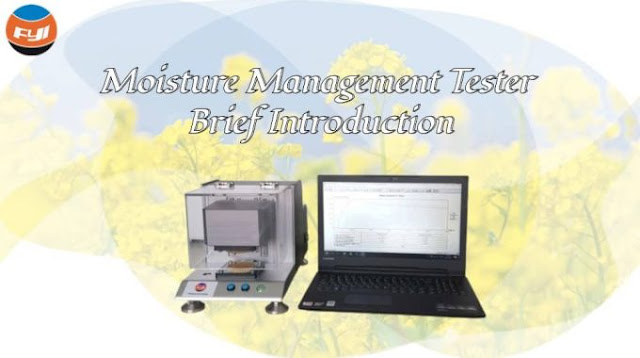Moisture Management Tester Brief Introduction
In the previous article, we mentioned thermal and moisture comfort, which is one of the most important factors in the human body’s subjective judgment of clothing comfort. An important heat dissipation function of the human body is carried out by the secretion of sweat and its evaporation. Water vapor takes away the heat from the body or the surface of the fabric through evaporation. Research has found that in the microclimate environment of clothing, the sweat absorption of clothing, the transmissibility of sweat by fabrics, and the location of evaporation on the fabric are all related to the comfort of wearing.
Currently, functional fabrics with good liquid moisture management capabilities are widely used in sports and outdoor clothing, high-end casual wear and uniforms. The properties of these fabrics include: quick drying, excellent moisture permeability and perspiration (can quickly remove sweat from the skin and keep the skin dry). Some traditional standards and testing methods can be used to detect these functional fabrics, such as water absorption diffusion, wicking height, drip penetration time, moisture permeability and drying rate, etc. However, these test methods cannot measure the three-dimensional transfer of liquid water on fabrics. In this article, we introduce a new method for testing the moisture management capabilities of textile products that can help us accurately evaluate and develop moisture-wicking and quick-drying apparel products.
Currently, functional fabrics with good liquid moisture management capabilities are widely used in sports and outdoor clothing, high-end casual wear and uniforms. The properties of these fabrics include: quick drying, excellent moisture permeability and perspiration (can quickly remove sweat from the skin and keep the skin dry). Some traditional standards and testing methods can be used to detect these functional fabrics, such as water absorption diffusion, wicking height, drip penetration time, moisture permeability and drying rate, etc. However, these test methods cannot measure the three-dimensional transfer of liquid water on fabrics. In this article, we introduce a new method for testing the moisture management capabilities of textile products that can help us accurately evaluate and develop moisture-wicking and quick-drying apparel products.
Fabric liquid moisture transport properties in multi-dimensions, called moisture management properties influence the human perception of moisture sensations significantly. Some standards and test methods can be employed to evaluate the fabric’s simple absorbency and wicking properties, and the liquid strike-through time of nonwovens also can be tested according to ASTM195 and GB/T 21655.2. can measure the behavior of liquid transfer of the clothing materials dynamically.
The moisture management tester is a new testing method and instrument used to test the moisture management ability of textiles. With this new instrument, we can quickly measure the dynamic water transfer properties of liquid water in three directions within textiles. Through laboratory tests on different fabrics, the test results show that there are obvious differences in the measurement data between different fabrics.
At present, although some fabrics have good quick-drying and water-absorbing properties, they do not have good perspiration properties, while some fabrics have perspiration properties and can quickly transfer sweat from the inner layer of the clothes to the outer layer. Test results show that It has good comprehensive moisture management capabilities and one-way transmission performance, so. Through MMT testing, it not only helps us to quality control the liquid moisture management performance of fabrics in the production and trade links, but also helps us select the correct fiber materials, design reasonable fabric structures, and conduct appropriate chemical testing during product development. Finishing process to achieve ideal product performance.
The moisture management tester is a new testing method and instrument used to test the moisture management ability of textiles. With this new instrument, we can quickly measure the dynamic water transfer properties of liquid water in three directions within textiles. Through laboratory tests on different fabrics, the test results show that there are obvious differences in the measurement data between different fabrics.
At present, although some fabrics have good quick-drying and water-absorbing properties, they do not have good perspiration properties, while some fabrics have perspiration properties and can quickly transfer sweat from the inner layer of the clothes to the outer layer. Test results show that It has good comprehensive moisture management capabilities and one-way transmission performance, so. Through MMT testing, it not only helps us to quality control the liquid moisture management performance of fabrics in the production and trade links, but also helps us select the correct fiber materials, design reasonable fabric structures, and conduct appropriate chemical testing during product development. Finishing process to achieve ideal product performance.
The Moisture Management Tester is an equipment to measure the dynamic liquid transport properties of textiles such as knitted and woven fabrics in three dimensions:
- Absorption Rate – Moisture absorbing time of the fabric’s inner and outer surfaces.
- One-way Transportation Capability – Liquid moisture one-way transfer from fabric’s inner surface to outer surface
- Spreading/Drying Rate – Speed of liquid moisture spreading on fabric’s inner and outer surfaces




Comments
Post a Comment